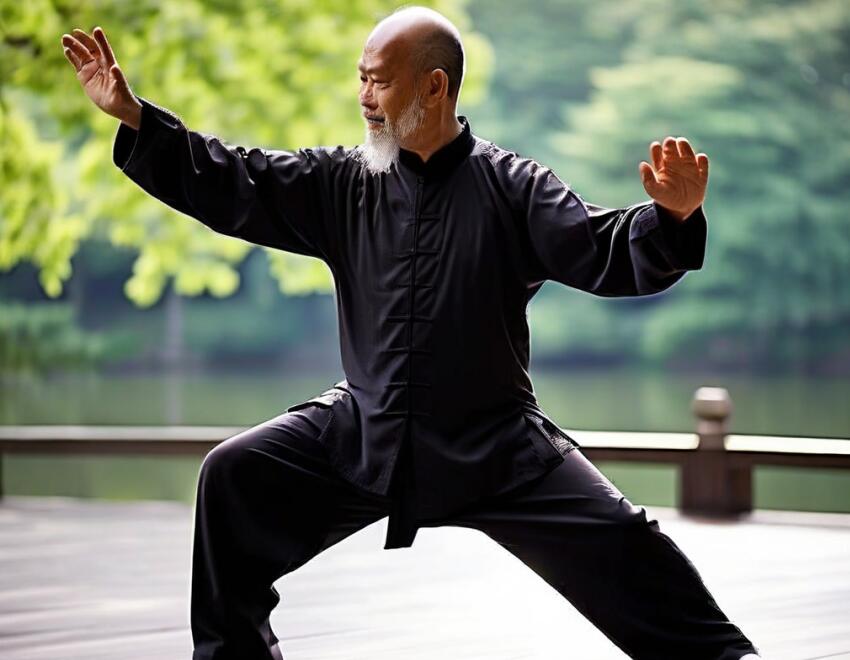Vertigo is a common condition that affects millions of people worldwide. It can cause a sensation of spinning, dizziness, and loss of balance. This can be a frightening and debilitating experience, impacting daily activities and overall quality of life. The good news is that there are several exercises that can help to reduce or even eliminate vertigo symptoms. In this article, we’ll explore the 15 best exercises to get rid of vertigo.

What is Vertigo?
Before we explore the best exercises for vertigo, it is essential to understand what vertigo is and how it affects the body. Vertigo is a symptom, not a disease itself, characterized by a feeling of spinning or whirling, even when you are stationary. It can last for a few seconds to several hours or even days, depending on the underlying cause.
There are two main types of vertigo:
- Peripheral vertigo: This type of vertigo is caused by problems in the inner ear or vestibular nerve. This is responsible for sending signals to the brain about head position and movement. The most common cause of peripheral vertigo is Benign Paroxysmal Positional Vertigo (BPPV). This occurs when tiny calcium crystals in the inner ear become dislodged and move into the fluid-filled canals, causing dizziness.
- Central vertigo: This type of vertigo is caused by issues in the brain, such as a stroke, tumor, or multiple sclerosis. Central vertigo is less common than peripheral vertigo but can be more severe and require immediate medical attention.
Common causes of vertigo include:
- Meniere’s disease: An inner ear disorder that leads to episodes of vertigo, fluctuating hearing loss, tinnitus, and a feeling of fullness in the ear.
- Vestibular neuritis: Inflammation of the vestibular nerve, often due to a viral infection, resulting in vertigo and balance problems.
- Labyrinthitis: An infection or inflammation of the inner ear that can cause vertigo, hearing loss, and tinnitus.
Health Benefits of Exercise in Managing Vertigo
Exercise plays a crucial role in managing vertigo symptoms and improving overall balance and coordination. By performing specific exercises, you can help to retrain your brain and inner ear to work together more effectively, reducing the frequency and severity of vertigo episodes.
Some of the key benefits of exercise for vertigo include:
- Improved balance and coordination: Exercises that challenge your balance and coordination can help to strengthen the muscles and neural pathways.
- Reduced anxiety and stress: Vertigo can be a stressful and anxiety-provoking condition, but exercise can help to reduce these negative emotions by releasing endorphins and promoting relaxation.
- Enhanced circulation: Exercise can help to improve blood flow to the brain and inner ear. This can promote healing and reduce inflammation.
- Increased confidence: As you begin to see improvements in your balance and coordination, you may feel more confident and empowered.
It’s important to note that not all exercises are appropriate for everyone with vertigo, and some may even worsen symptoms. That’s why it’s crucial to work with a qualified healthcare professional.

15 Best Exercises to Get Rid of Vertigo
Now that we’ve covered the basics of vertigo and the role of exercise in managing symptoms, let’s dive into the 15 best exercises for getting rid of vertigo.
1. Epley Maneuver
The Epley maneuver is a series of movements that can help relieve vertigo caused by benign paroxysmal positional vertigo (BPPV), the most common cause of vertigo.
BPPV occurs when tiny calcium crystals in your inner ear become dislodged and move into the fluid-filled canals. This causes a sense of spinning when you change head positions. To perform the Epley maneuver:
- Sit on the edge of a bed and turn your head 45 degrees to the side which causes vertigo.
- Quickly lie back, keeping your head turned. Hold for 30 seconds.
- Turn your head 90 degrees to the opposite side. Hold for 30 seconds.
- Roll onto your side while keeping your head turned. Hold for 30 seconds.
- Slowly sit up.
Repeat these steps 3 times, 3 times per day. Most people experience relief within a few days. If your symptoms persist or worsen, consult your healthcare provider for further guidance.
2. Semont Maneuver
The Semont maneuver is another effective treatment for BPPV. It works similarly to the Epley maneuver by using gravity to move the displaced calcium crystals out of the inner ear canals. Here’s how to do it:
- Sit on the edge of a bed. Turn your head 45 degrees away from the side causing vertigo.
- Quickly lie down on the side that causes vertigo. Hold this position for 30 seconds.
- Quickly move to lie down on the opposite end of the bed, maintaining the head position. Hold for 30 seconds.
- Slowly return to sitting and wait a few minutes.
Repeat 3 times daily until symptoms resolve, usually within a week. If you experience severe dizziness or nausea during the maneuver, consult your healthcare provider.
3. Brandt-Daroff Exercises
Brandt-Daroff exercises are another option for treating BPPV, using gravity to dislodge crystals in the inner ear that cause vertigo.
These exercises are often recommended when the Epley and Semont maneuvers are not well tolerated or if the affected ear canal is unclear. To perform these exercises:
- Sit upright on the edge of a bed.
- Turn your head 45 degrees to the left.
- Quickly lie down on your right side. Hold for 30 seconds or until dizziness subsides.
- Sit up and turn your head back to center.
- Repeat on the other side.
Do 5-10 repetitions, 3 times daily. Symptoms typically improve within 2 weeks. If you don’t notice improvement after 2 weeks, consult your healthcare provider for additional treatment options.
4. Gaze Stabilization Exercises
Gaze stabilization exercises train your eyes and vestibular system to work together, reducing dizziness and improving visual clarity during head movements. These exercises are particularly helpful for those with vestibular disorders, such as vestibular neuritis or labyrinthitis. To do these exercises:
- Hold your thumb at arm’s length in front of you.
- Focus on your thumb as you turn your head from side to side while keeping your thumb still.
- Move your head faster as tolerated, but stop if you feel dizzy.
Perform for 1-2 minutes, 3-5 times daily. As your symptoms improve, increase the speed of your head movements and the duration of the exercise.
5. Standing Balance Exercises
Improving your balance can help prevent falls if you experience vertigo, especially in older adults or those with chronic vestibular disorders. Try these standing balance exercises:
- Stand with your feet shoulder-width apart.
- Shift your weight to one foot, lifting the opposite foot off the ground.
- Hold for 30 seconds, then switch sides.
- Progress to standing on one foot with your eyes closed.
Perform 3 sets on each side, 2-3 times daily. To make the exercise more challenging, try standing on a soft surface, such as a foam pad or pillow.
6. Walking Exercises
Walking exercises challenge your balance while moving, helping your brain adapt to changes in your environment and reducing vertigo symptoms. Here’s a simple walking exercise to try:
- Walk in a straight line, placing one foot directly in front of the other.
- Turn around and walk back the same way.
- Repeat 10 times.
- Progress to walking with your eyes closed.
Do this exercise 2-3 times daily. As you become more comfortable, try walking on different surfaces, such as grass or sand, to further challenge your balance.

7. Tai Chi
Tai Chi is a gentle, low-impact exercise that combines slow, flowing movements with deep breathing and meditation.
Research has shown that regular Tai Chi practice can improve balance, reduce dizziness, and enhance overall quality of life in people with vertigo.
Join a local Tai Chi class or follow along with a video at home. Aim for 30 minutes of practice, 3-5 times per week.
8. Yoga
Certain yoga poses can help alleviate vertigo symptoms and improve balance by promoting relaxation, increasing flexibility, and strengthening core muscles. Try these gentle poses:
- Mountain pose: Stand tall with your feet together, engaging your core and lengthening your spine.
- Tree pose: Balance on one foot, placing the sole of your other foot on your inner thigh or calf.
- Warrior II pose: Step your feet wide apart, turning one foot out 90 degrees and bending the knee. Extend your arms and gaze over your front hand.
- Triangle pose: Stand with your feet wide apart, reaching one hand down to your foot and the other toward the ceiling, keeping your gaze upward.
Hold each pose for 30 seconds to 1 minute, focusing on your breath. Practice 3-5 times per week. If you feel dizzy during any pose, come out of it slowly and rest.
9. Head Rotations
Gentle head rotations can help your brain adapt to the sensation of movement, reducing vertigo and improving your ability to tolerate motion. To perform head rotations:
- Sit upright in a chair.
- Slowly turn your head to the right, then to the left.
- Repeat 10 times in each direction.
- Progress to moving your head up and down, 10 times.
Do this exercise 2-3 times daily. If you feel dizzy, slow down the movement or take a break.
10. Eye Tracking Exercises
Eye tracking exercises can help improve visual stability and reduce dizziness by training your eyes to work together with your vestibular system. To do these exercises:
- Hold your finger at arm’s length in front of you.
- Focus on your finger as you slowly move it to the right, then to the left.
- Follow your finger with your eyes, keeping your head still.
- Repeat 10 times in each direction.
Perform this exercise 2-3 times daily. As you improve, try moving your finger in different directions, such as diagonally or in a circle.
11. Cawthorne-Cooksey Exercises
The Cawthorne-Cooksey exercises are a series of movements designed to help retrain your brain to tolerate motion and reduce vertigo symptoms. These exercises were developed in the 1940s and have been widely used in vestibular rehabilitation. The exercises include:
- Eye movements: Move your eyes up and down, then side to side, 10 times each.
- Head movements: Bend your head forward and backward, then turn side to side, 10 times each.
- Bending and stretching: Bend forward to touch your toes, then stretch your arms overhead, 10 times each.
- Throwing and catching a ball: Toss a small ball from one hand to the other, gradually increasing the distance and speed.
Perform each movement 10 times, 2-3 times daily. Progress to more challenging exercises as your symptoms improve.
12. Vestibular Rehabilitation Therapy (VRT)
VRT is a specialized form of physical therapy designed to treat vertigo and balance disorders by retraining your vestibular system to function properly.
A trained vestibular therapist will create a personalized exercise program based on your specific needs, which may include a combination of gaze stabilization, balance, and habituation exercises. VRT can be highly effective in reducing vertigo symptoms and improving quality of life.
13. Breathing Exercises
Deep breathing exercises can help reduce anxiety and dizziness associated with vertigo by promoting relaxation and increasing oxygen flow to the brain. Try this simple breathing exercise:
- Sit comfortably with your eyes closed.
- Inhale deeply through your nose for a count of 4.
- Hold your breath for a count of 7.
- Exhale slowly through your mouth for a count of 8.
Repeat for 5-10 minutes, 1-2 times daily. You can also try other breathing techniques, such as alternate nostril breathing or belly breathing.
14. Neck Stretches
Gentle neck stretches can help relieve tension and improve circulation, which may reduce vertigo symptoms, especially if your vertigo is related to neck problems or poor posture. To perform neck stretches:
- Sit upright in a chair.
- Slowly tilt your head to the right, bringing your ear toward your shoulder.
- Hold for 10-15 seconds, then repeat on the left side.
- Gently lower your chin toward your chest, holding for 10-15 seconds.
Perform each stretch 3-5 times, 2-3 times daily. Be sure to move slowly and avoid overstretching, which can worsen symptoms.
15. Stress Management
Stress and anxiety can exacerbate vertigo symptoms by increasing muscle tension, altering breathing patterns, and affecting the balance of hormones in your body.
Incorporating stress-reducing activities into your daily routine can help manage vertigo and improve your overall well-being. Some effective stress management techniques include:
- Meditation: Practice mindfulness or guided meditation to calm your mind and reduce anxiety.
- Deep breathing exercises: Use the breathing exercises described earlier to promote relaxation.
- Progressive muscle relaxation: Systematically tense and relax different muscle groups to release tension.
- Journaling: Write down your thoughts and feelings to process emotions and gain clarity.
- Spending time in nature: Take a walk in a park, garden, or natural setting to reduce stress and improve mood.
Aim for 10-20 minutes of stress-reducing activities per day. You can also try other stress management techniques, such as yoga, tai chi, or engaging in hobbies you enjoy.
When to Seek Medical Attention?
While exercise can be a highly effective way to manage vertigo symptoms, there are some cases where medical attention may be necessary. If you experience any of the following symptoms, it’s important to contact your healthcare provider right away:
- Severe or prolonged vertigo episodes
- Vertigo is accompanied by hearing loss, vision changes, or numbness
- Vertigo that occurs after a head injury
- Vertigo that does not improve with exercise or other home treatments
Your provider may recommend additional tests or treatments, such as medication, vestibular rehabilitation, or surgery, depending on the underlying cause of your vertigo.






